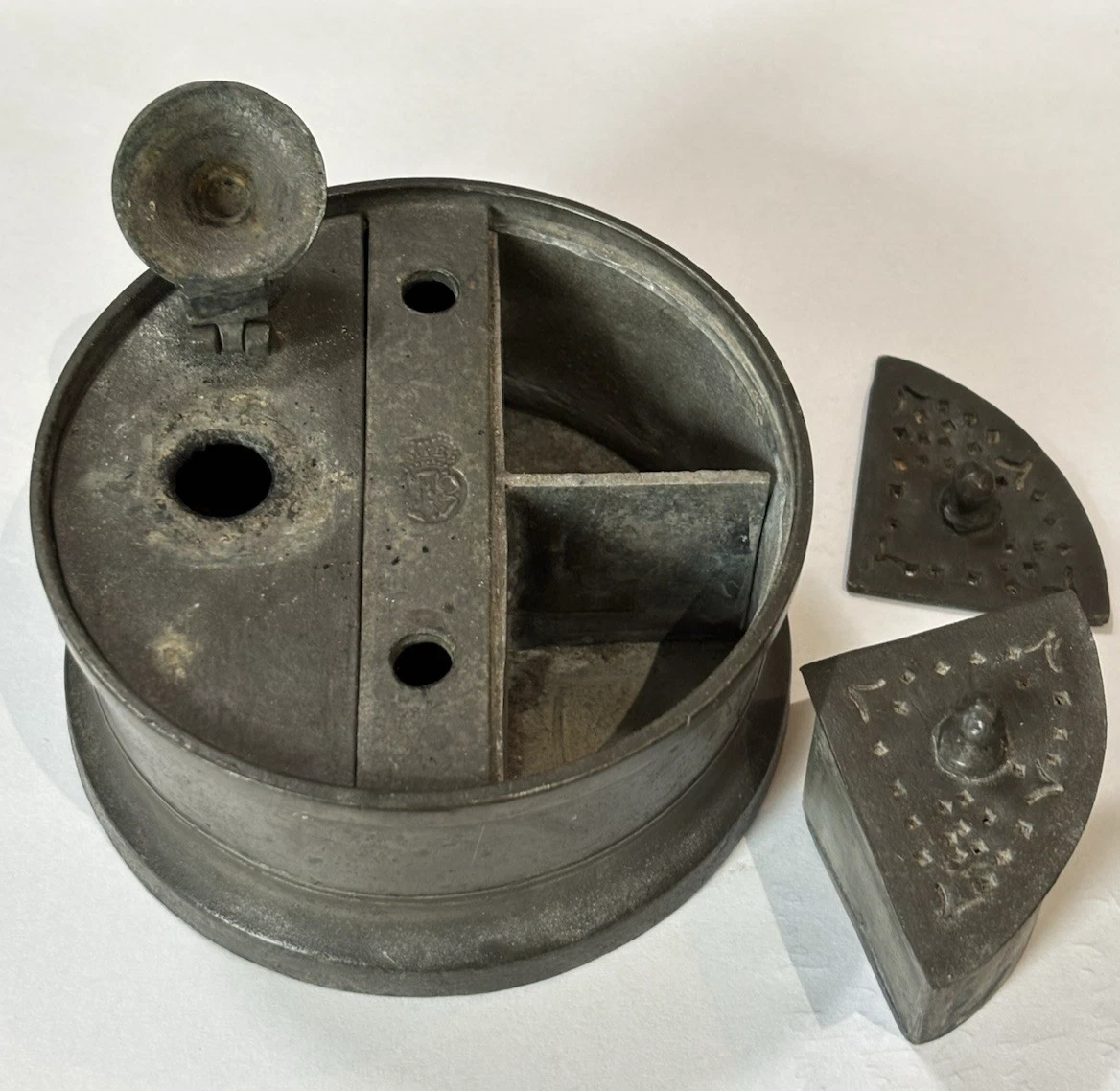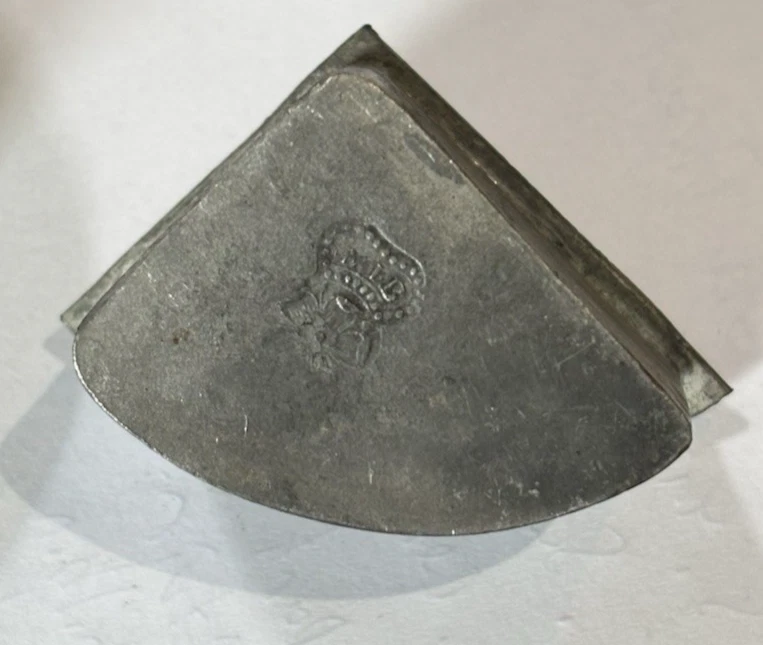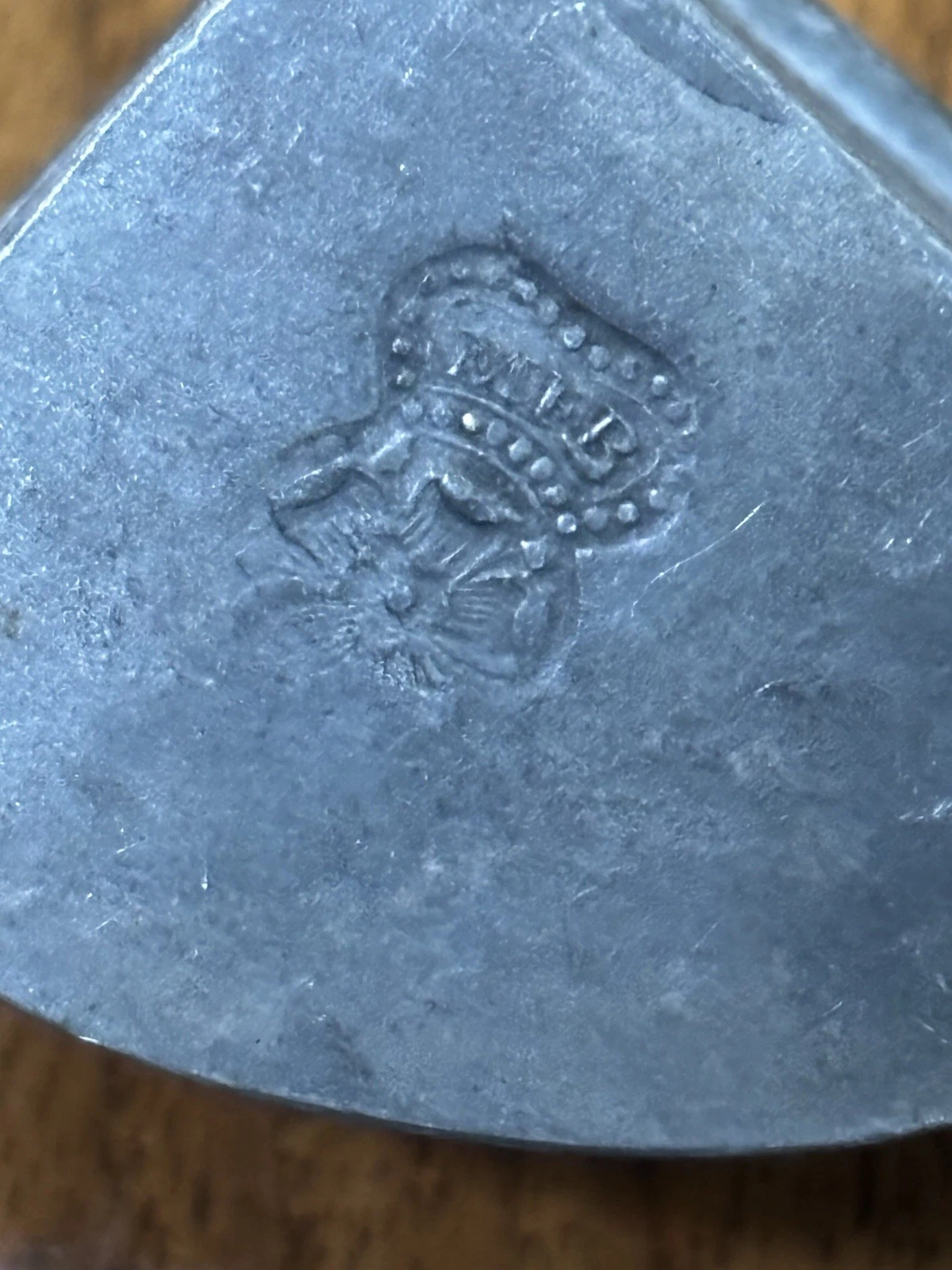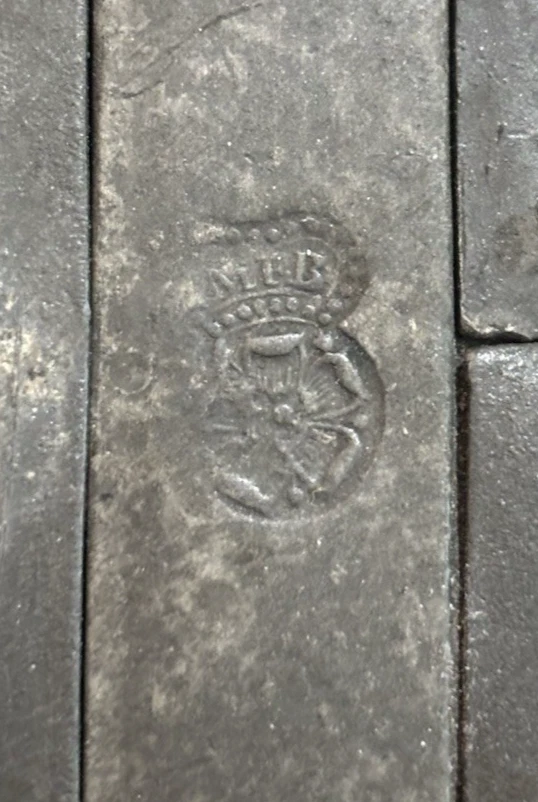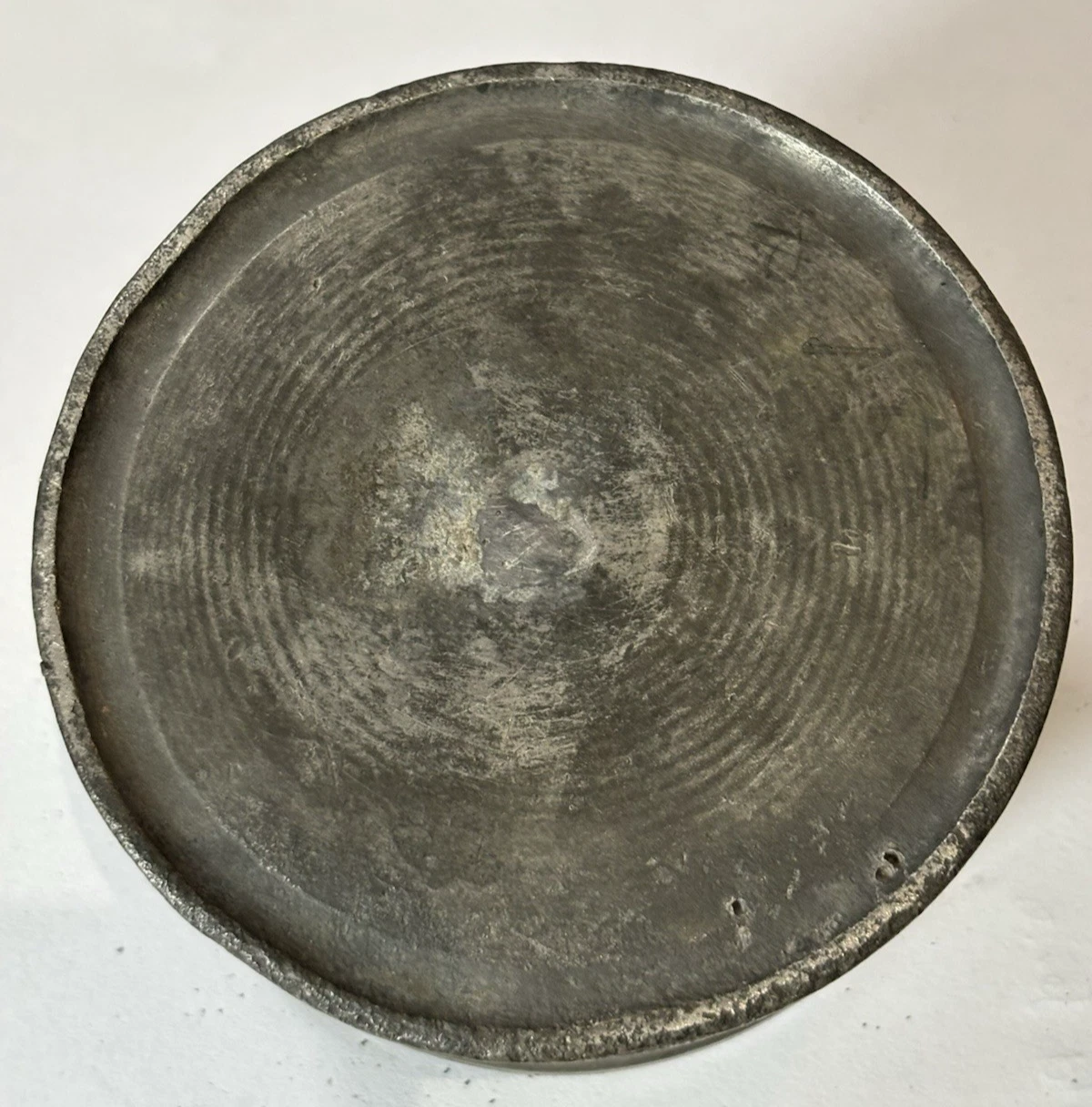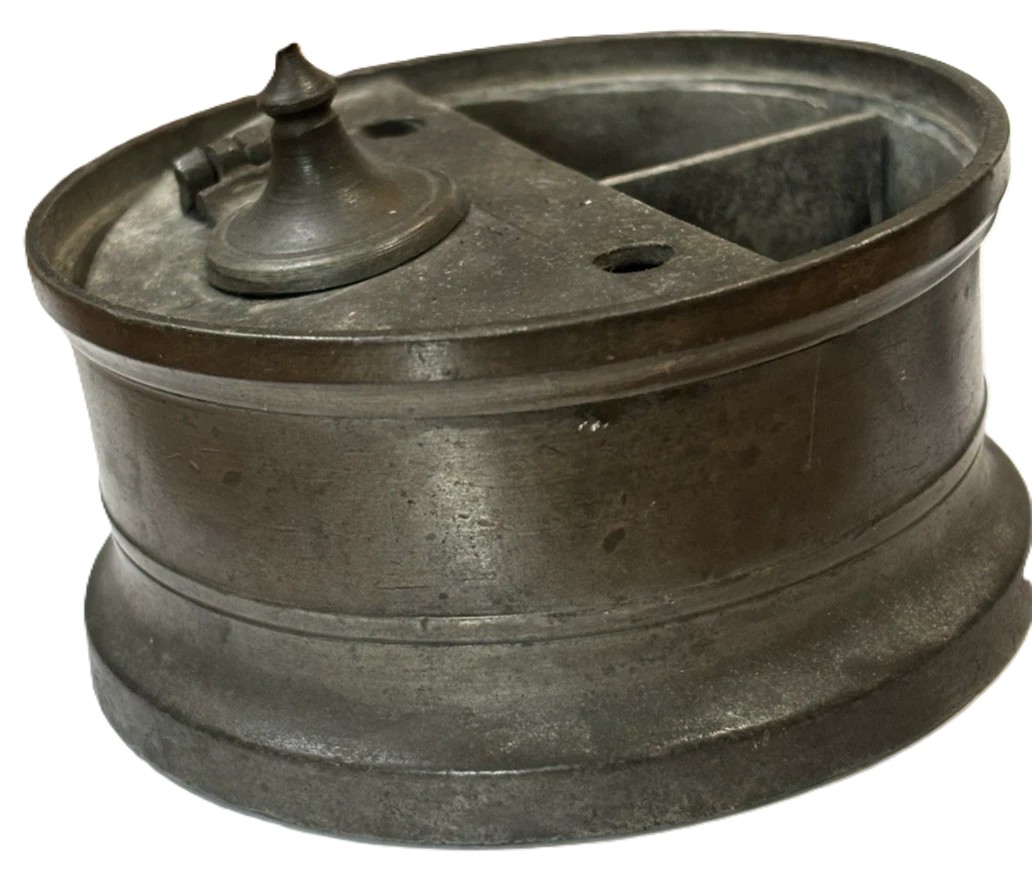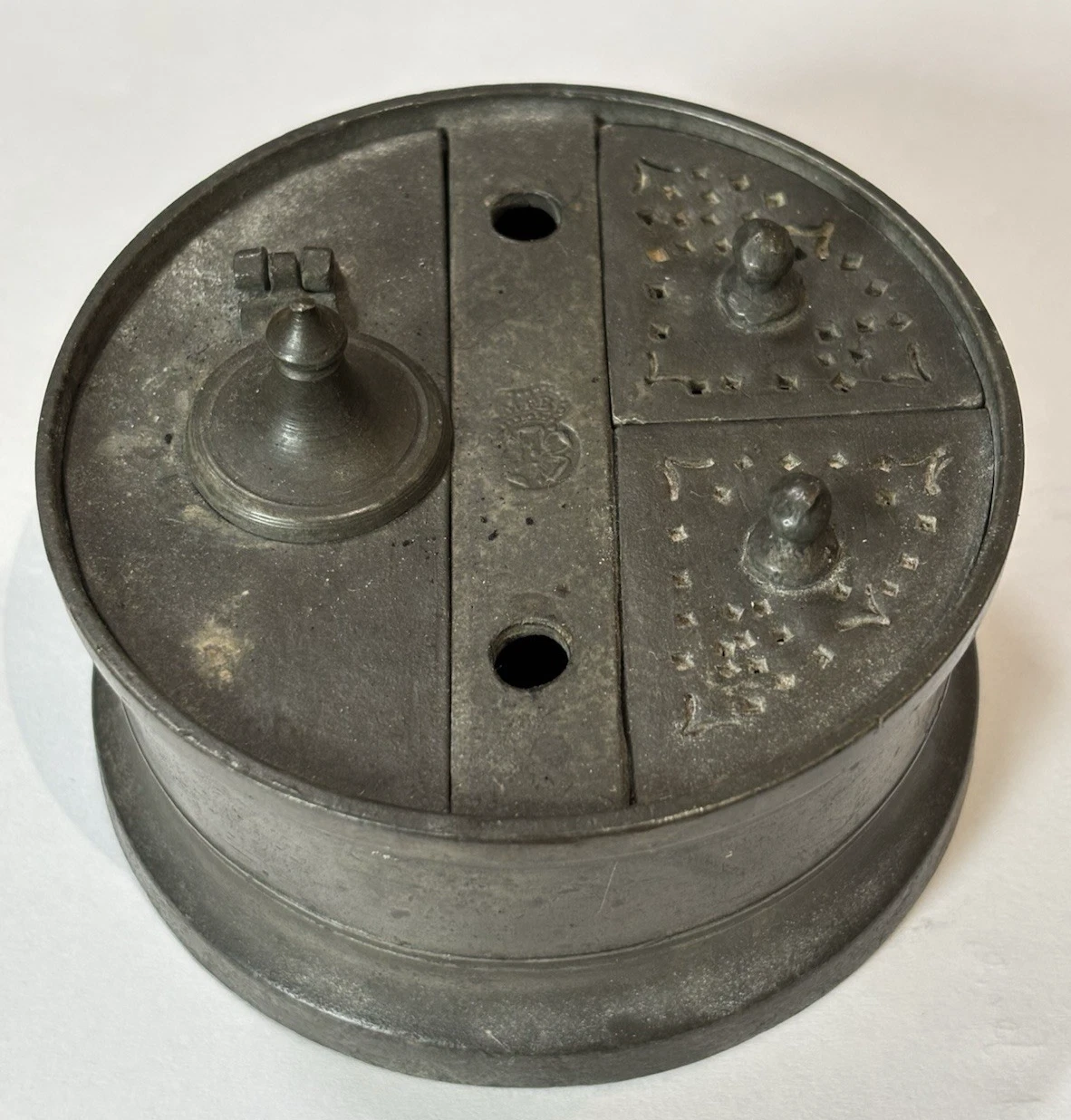
Inkipedia
Pewter Inkwell
| Categories | Pewter / Tin |
| Material | Pewter |
| Markings | See Narrative |
| Manufacturer | Undetermined |
| Origin | England |
| Date or Era | circa 1800 |
| Measuring | 4” diameter; 2” high |
This is a circular-shaped pewter inkstand, designed to be a self-contained unit for writing.
- Material and Construction: The piece is made of pewter, a soft, malleable alloy. Its construction is simple and functional, with a round shape. The pewter has a soft, aged patina.
- Layout and Features:
- Inkwell: A circular, hinged lid covers the ink supply.
- Sander / Pounce Pot: There is a round, pie-shaped section with a perforated, fitted lid. This is a “sander” or “pounce pot.” Before blotting paper was common, writers would sprinkle fine sand or “pounce” (a fine powder like cuttlefish bone or pumice) over wet ink to dry it quickly. The holes in the lid, like a saltshaker, allowed for an even distribution of the powder.
- Central Area: The middle section is a flat surface with two pen holes. There is an impressed mark in this section. The initials “MFB” are visible. There is also a small, circular crest or hallmark beside the initials.
Interpretation of the “MFB” Markings
Interpreting pewter hallmarks is challenging, as the practice of marking wasn’t strictly regulated as it was for silver.
- “MFB” likely stands for the manufacturer or the silversmith’s name. While “MFB” is not one of the most famous or widely documented pewter marks, it points to a specific maker.
- Pewterers often used their initials as a personal or company mark. The circular crest beside the initials may be a “touchmark,” a unique stamp or symbol used by a guild or the craftsman to signify quality and origin.
- This style of marking is very typical of English pewterers from the 18th and early 19th centuries. The practice of using touchmarks was a long-standing tradition among guilds.
Origin and Age
- Origin: The design and the style of the marking strongly suggest that this piece was made in England.
- Age: Based on the overall design, the use of a sander/pounce pot, and the type of marking, this inkstand likely dates to the late 18th or very early 19th century (c. 1780-1820). The need for a pounce pot became obsolete with the invention of blotting paper in the 1820s and 1830s.
Sold for $57 in July 2025
Content disclaimer. The information posted is the owner’s best knowledge and may not have been vetted by the SOIC. We welcome comments, corrections, and additions, working to make our website information comprehensive and accurate.
Join the Society of Inkwell Collectors (SOIC) – it’s free!
Founded in 1981 as a non-profit organization,
we are documenting inkwells (and accessories).
We’re here to help and inform!

